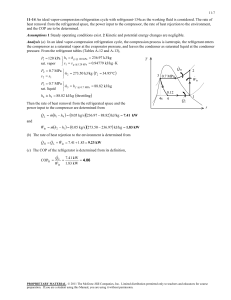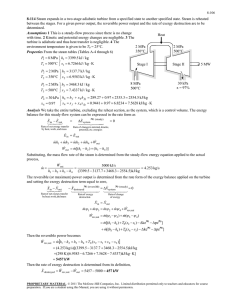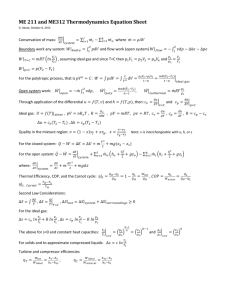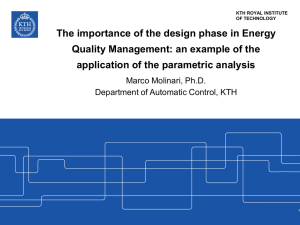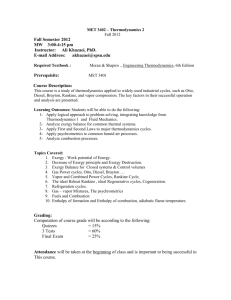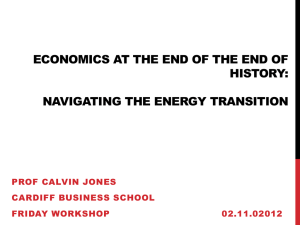the COP, The exergy destruction in each component and the... 11-34
advertisement
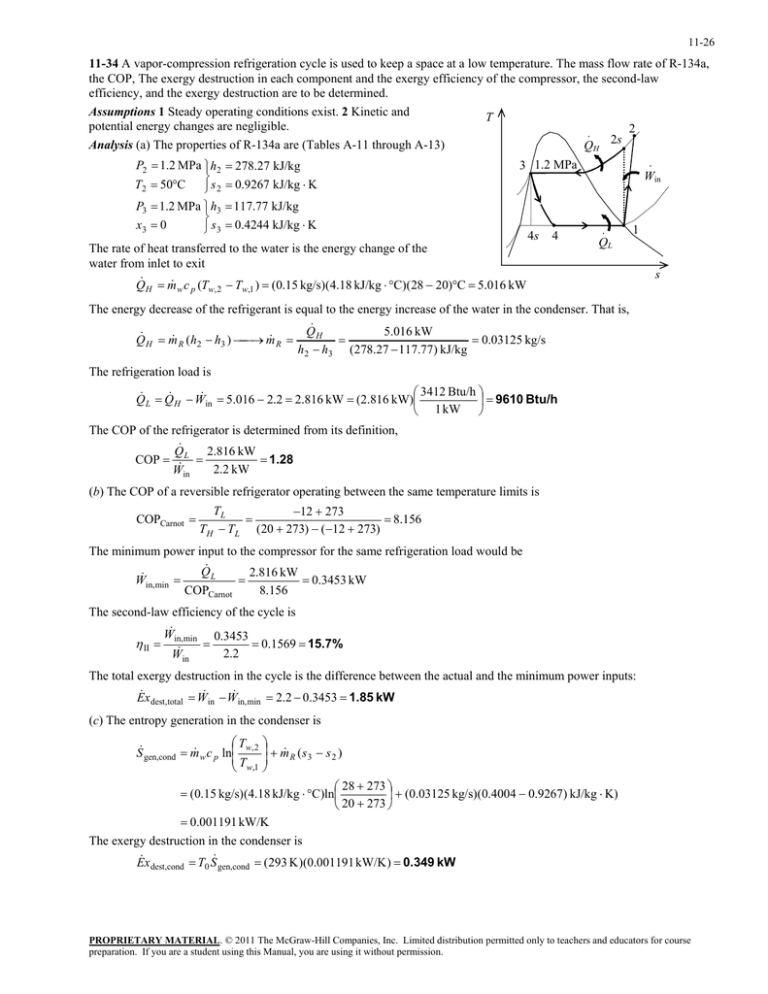
11-26 11-34 A vapor-compression refrigeration cycle is used to keep a space at a low temperature. The mass flow rate of R-134a, the COP, The exergy destruction in each component and the exergy efficiency of the compressor, the second-law efficiency, and the exergy destruction are to be determined. Assumptions 1 Steady operating conditions exist. 2 Kinetic and T potential energy changes are negligible. 2 · Analysis (a) The properties of R-134a are (Tables A-11 through A-13) QH 2s P2 1.2 MPa h2 T2 50C s 2 P3 1.2 MPa h3 x3 0 s3 278.27 kJ/kg 3 1.2 MPa 0.9267 kJ/kg K 117.77 kJ/kg 0.4244 kJ/kg K 4s 4 The rate of heat transferred to the water is the energy change of the water from inlet to exit Q m c (T T ) (0.15 kg/s)(4.18 kJ/kg C)(28 20)C 5.016 kW H w p w, 2 · Win · 1 QL s w,1 The energy decrease of the refrigerant is equal to the energy increase of the water in the condenser. That is, Q H 5.016 kW Q H m R (h2 h3 ) m R 0.03125 kg/s h2 h3 (278.27 117.77) kJ/kg The refrigeration load is 3412 Btu/h Q L Q H W in 5.016 2.2 2.816 kW (2.816 kW) 9610 Btu/h 1 kW The COP of the refrigerator is determined from its definition, Q 2.816 kW COP L 1.28 2.2 kW Win (b) The COP of a reversible refrigerator operating between the same temperature limits is COPCarnot TL 12 273 8.156 TH TL (20 273) (12 273) The minimum power input to the compressor for the same refrigeration load would be Q L 2.816 kW 0.3453 kW W in,min COPCarnot 8.156 The second-law efficiency of the cycle is W in,min 0.3453 II 0.1569 15.7% 2.2 W in The total exergy destruction in the cycle is the difference between the actual and the minimum power inputs: E x W W 2.2 0.3453 1.85 kW dest, total in in, min (c) The entropy generation in the condenser is T w, 2 S gen,cond m w c p ln T w,1 m R ( s 3 s 2 ) 28 273 (0.15 kg/s)(4.18 kJ/kg C)ln (0.03125 kg/s)(0.4004 0.9267) kJ/kg K) 20 273 0.001191 kW/K The exergy destruction in the condenser is E x T S (293 K )(0.001191 kW/K ) 0.349 kW dest,cond 0 gen,cond PROPRIETARY MATERIAL. © 2011 The McGraw-Hill Companies, Inc. Limited distribution permitted only to teachers and educators for course preparation. If you are a student using this Manual, you are using it without permission.
